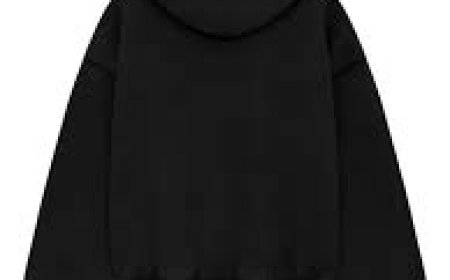Tree Pruning: The Secret to Stronger, Healthier Trees
Tree pruning isn’t just yard work—it’s tree health care. Done right, it keeps your trees strong, safe, and beautiful for decades. Whether you’re shaping a young tree or removing hazardous limbs, pruning makes a huge difference.

Ever look at your trees and wonder if they need a little haircut? Just like people, trees need regular pruning to stay healthy, look great, and avoid messy or dangerous problems down the line.
Tree pruning isnt just about making trees look niceits a vital part of tree care and safety. In this guide, youll learn everything about tree pruningwhat it is, why it matters, when to do it, how to do it safely, and even when to call a pro.
Lets branch into it ?
?? What Is Tree Pruning?
Tree pruning is the practice of removing specific branches or stems to improve the health, structure, and appearance of a tree.
It involves:
-
Cutting off dead or diseased limbs
-
Thinning out crowded branches
-
Shaping the tree for aesthetics or safety
-
Promoting stronger growth
? Why Tree Pruning Is Important
1. Promotes Healthy Growth
Pruning encourages new, healthy growth and helps the tree focus energy on strong branches.
2. Prevents Disease
Removing infected or dead branches stops decay and disease from spreading.
3. Improves Appearance
Well-pruned trees look tidy, balanced, and more attractive in any landscape.
4. Enhances Safety
Weak or overhanging branches can fall during storms, damaging property or hurting people.
5. Better Sunlight & Airflow
Pruning opens the canopy, which increases sunlight penetration and air circulation, helping grass and other plants grow underneath.
? Different Types of Tree Pruning
Not all pruning is the samehere are the main types:
1. Crown Cleaning
Removes dead, dying, or diseased branches from the trees crown.
2. Crown Thinning
Selective removal of branches to reduce density, improve light, and airflow.
3. Crown Raising
Removes lower branches to clear space beneath the treeideal for walkways, driveways, or views.
4. Crown Reduction
Shortens the height or spread of a treeused to reduce weight or fit a space.
5. Structural or Formative Pruning
Focuses on young trees to develop strong branch structure and avoid future problems.
? When Is the Best Time to Prune Trees?
The ideal time depends on the tree species and purpose:
| Season | Best Use |
|---|---|
| Winter (Dormant Season) | Best for most treesstimulates spring growth |
| Spring | Light pruning; remove storm damage |
| Summer | Controls growth; ideal for shaping |
| Fall | Avoid major cutsfungi and disease risk |
Tip: Avoid heavy pruning in late summer or fall. It can encourage new growth that may not survive winter.
? Tree Pruning Tools Youll Need
-
Hand pruners For small branches and precision cuts
-
Loppers For thicker branches up to 2 inches
-
Pole saws For hard-to-reach limbs
-
Pruning saws For larger branches
-
Chainsaws Only for large limbs (use with caution)
-
Protective gear Gloves, eye protection, hard hat
Always sharpen tools before use and sanitize them between cuts (especially on diseased trees).
? Tree Pruning Tips for Success
-
Cut just outside the branch collarnever flush with the trunk
-
Use the 3-cut method for large limbs to prevent bark tearing
-
Never remove more than 25% of a trees crown in one season
-
Dont top treesit creates weak growth and stress
-
Step back and assess as you gopruning is both art and science
? Common Tree Pruning Mistakes
-
Over-pruning: Weakens the tree and makes it vulnerable to disease
-
Wrong timing: Can lead to poor healing or new growth at the wrong time
-
Improper cuts: Damaged bark or stubs cause rot
-
Using dull tools: Makes jagged cuts that dont heal well
-
Topping the tree: Damages the trees structure and appearance permanently
? DIY vs. Professional Tree Pruning
DIY Pruning:
Great for:
-
Small trees or shrubs
-
Dead or low-hanging branches
-
Light seasonal maintenance
Hire a Pro For:
-
Large or mature trees
-
Dangerous or high branches
-
Trees near power lines
-
Trees with disease or structural issues
Certified arborists understand tree biology, safety, and local regulationsdont take risks if youre unsure.
? What to Do After Pruning
-
Clean up all branches and leaves
-
Apply tree wound dressing only if recommended (usually not needed)
-
Water and mulch around the base
-
Monitor for signs of stress or pests in the weeks after
? Environmental Benefits of Pruned Trees
Well-maintained trees:
-
Use water more efficiently
-
Absorb more carbon dioxide
-
Provide better shade and cooling
-
Support wildlife habitats more effectively
A healthier tree = a healthier environment.
? Conclusion
Tree pruning isnt just yard workits tree health care. Done right, it keeps your trees strong, safe, and beautiful for decades. Whether youre shaping a young tree or removing hazardous limbs, pruning makes a huge difference.
If youre confident, grab your tools and get started. If not, call a pro and let the experts keep your landscape in perfect shape.
?FAQs
1. How often should I prune my trees?
Most trees benefit from pruning every 13 years, depending on species and location.
2. Whats the best month to prune trees?
Late winter or early spring is ideal for most species before new growth begins.
3. Can pruning hurt a tree?
Yes, if done incorrectlyover-pruning or cutting in the wrong place can stress or even kill a tree.
4. Should I prune a tree after planting it?
Yes, but lightly. Focus on removing broken or poorly placed branches while letting the tree establish itself.
5. Is tree pruning expensive?
Costs varytypically $100 to $500 per tree depending on size, condition, and location.
































